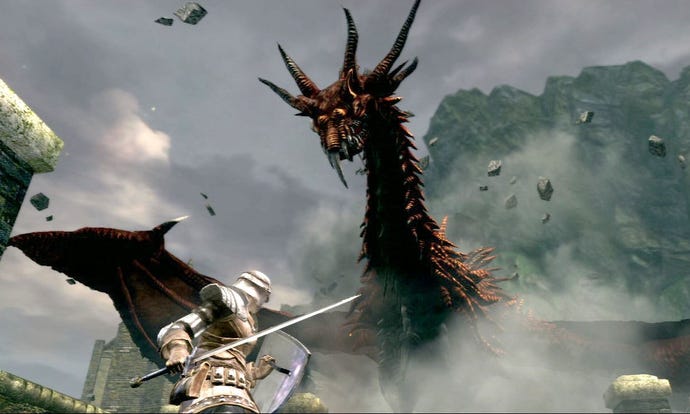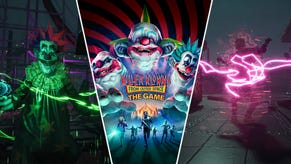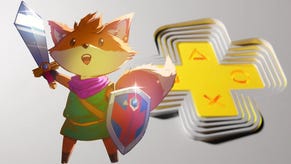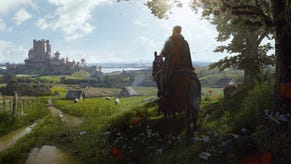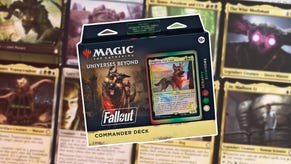What Are The Best PS3 Games Ever?
There are stacks of sensational PS3 games, but which are the best of the best? Here are our personal picks - and not all of them are the critically-acclaimed smash-hits you might expect.
This article first appeared on USgamer, a partner publication of VG247. Some content, such as this article, has been migrated to VG247 for posterity after USgamer's closure - but it has not been edited or further vetted by the VG247 team.
Mirroring our article in which we listed the games that we believe represent the very best the Xbox 360 has to offer this feature does the same for PlayStation 3.
Rather than being a somewhat predictable roster of massive best-sellers, the games on this list are personal picks from the USgamer team - games chosen not for their popularity or success, but simply because we believe they deliver the most enjoyable gaming of this generation. Yes, a few smash hits have snuck in, but these are games we believe are true classics: the best of the best. So while it might be shocking that games like GTA V, Bioshock Infinite and Mass Effect 3 are missing, that doesn’t mean we don’t like them. Far from it – they’re absolutely great, as are many other PS3 games. It’s just that when it comes down to it, we simply like playing these games more.
Think our choices suck? Can't believe we didn't include your favorites? That's what the comments section is all about. We'd love to hear what you think and which games you believe represent the best that the PS3 has to offer.
Cassandra Khaw, Content Editor
Papo & Yo
I remember when I first asked if there was death in Papo & Yo. It was 2011, I was talking to Vander Caballero and E3 was a bright, commercial monster that wouldn't stop trying to kill me with dubstep. Vander had said no. "Death doesn't exist in a child's imagination." Papo & Yo is a short, heartbreaking puzzle-adventure game that's a parable, an autobiographical vignette and a fairy tale all rolled into one. And like in all good fairy tales, the kind that people who wore wolf-suits and not Disney name-tags wrote, there's a certain darkness under the fantastical exterior. On the surface, it's an easy enough story to follow: there's a boy named Quico and his monster. Both adore one another. The latter, when not otherwise sleeping the hours away, is a guardian and a playmate to the other. It's awesome. But here's the problem. The monster has a dangerous addiction. If he gets access to the brightly-tinted frogs he so loves eating, he flips out and becomes a danger to Quico. Naturally, Quico doesn't hold him accountable. It's the frogs, not his monster. And as such, he eventually goes off on a quest to cure his friend.
There's a lot of discussion about games that have heart. Papo & Yo, I think, was built almost entirely out of heart. It's a retelling of Vander Caballero's youth and his experiences with an alcoholic father, a fact that shows in almost every aspect of the game. You can see all the ways a child's heart might have been broken over the years if you look hard enough. Mechanically, it isn't perfect. Papo & Yo can be frustrating in unpleasant ways. But is it worth playing? Yes. God, yes. I desperately want to spoil it all and tell you about my favorite parts (Hint: floating houses are a bit of an automatic win for me) but I don't want to risk getting hate mail. So, go play the darn thing.
Wait, this wasn't supposed to be a mini-review? Fine. Go play it, anyway!
Journey
The part of me that is borderline hipster-ish kind of wants to rail against the notion of enjoying Journey. Nonetheless, it's hard for me to go through any 'best of PS3' list without immediately thinking, 'Journey's got to be here.'
The word 'epic' tends to be used willy-nilly these days to describe everything from burgers to Homer's (No, the Greek one) contributions to literature but it's a word that well describes Thatgamecompany's most celebrated title. It opens with you, a red-robed figure of indeterminate age or gender, waking up in the sand. Realistic, shifting sands that make you want to reach through the glass and grab a fistful. Eventually, it escalates into a pilgrimage to a distant mountain. Along the way, you encounter the broken-down remnants of some ancient civilization, an ecosystem built out of other cloth creatures and maybe, just maybe, a friend or two. The thing about Journey's multiplayer is that it doesn't let you interact with other players in ways you would normally expect. Communication is restricted to bell-like peals, interaction to a co-operative attempt to help each other along the path. If you want to grief someone, you're going to have to try really, really hard.
What is most entrancing about Journey, perhaps, is the way it makes you feel so utterly small and how magnificent thatgamecompany has made the world. It's not simply a setting, a place to be in as the story unfolds. It's a world made for continuous exploration, to evoke the sense of child-like wonder we've only started putting back into games.
Brendan Sinclair, Contributing Editor

Catherine
I love it when games have narrative themes that reinforce their gameplay themes, and Catherine is one of the best I've ever seen. It's a game about the complexity of relationships, about what drives the choices we make and the consequences they produce. On the narrative side, Catherine follows Vincent, a man who's grown restless in a stable long-term relationship and wakes up after a night of drinking to find he's cheated with a free-spirited young girl. Racked with guilt but unsure about whether he wants to try to salvage his relationship, Vincent's situation deteriorates as he attempts to hide the two women in his life from each other while he figures out what he wants to do. As for the gameplay, it's a series of pressure-packed block puzzles, with the player pushing, pulling, and shimmying around giant cubes in order to climb a series of towers, pursued from below by horrible manifestations of Vincent's fears.
I've already talked about how engrossing the gameplay in Catherine is, but not about the way it echoes the narrative. The block-pushing puzzles in the game are a metaphor for relationships. They can seem simple and fun at first, but complexity ratchets up quickly, and the situations you find yourself in -- the difficulty of the ascent ahead -- can be intimidating and imposing. Naturally, there's also pressure to do something, to move forward or give up or fall, to do anything but stand still, because that will ultimately doom you. But you have to stop sometimes and consider the impact of each move, to think several moves ahead and imagine what the structure will look like after you shuffle around the foundations a bit to make your steps upward. Just like in a relationship, if you play it by ear too much, if you don't stop and consider the longer-term impacts of your decisions, you're likely to find yourself in an ultimately unworkable position, the victim of your own poorly considered choices.
Atlus did three very difficult things amazingly well with Catherine. First, it made an entertaining game about a relationship on the skids. Second, it married gameplay and narrative themes in such a way that each enhanced the other. Finally, it made block puzzles not just acceptable, but entirely absorbing. For that, Catherine would be on my list of the top games of the generation, regardless of platform.
Noby Noby Boy
Katamari Damacy was one of my favorite PS2 games, and it instantly made Keita Takahashi a creator whose work I will always give a chance. Unfortunately, the Katamari sequels (with the exception of the PS Vita launch title Touch My Katamari) failed to recapture the joy of the first entry, no doubt because they lacked the original's out-of-left-field novelty. (The fact that they were all more expensive than the first installment's $20 budget-friendly price point was also introduced a joy-dispelling edge of crass commercialism to the proceedings.)
Takahashi's PS3 downloadable game Noby Noby Boy may have been inferior to Katamari as a game, but it certainly didn't lack for originality. It's still tough to describe just what the hell the game is about. Players control the titular caterpillar-like creature, using the two thumbsticks to control the creature's head and hindquarters independently. As they explore fairly confined playfields stocked with seemingly random objects, players can stretch Noby Noby Boy out to obscene lengths and watch in delight or horror as the ever-growing worm begins to dominate the screen, carelessly knocking around anything in the world that isn't nailed down.
If there is a goal to Noby Noby Boy, it's to extend the boy as long as possible and then connect to the game's servers to upload that length to Noby Noby Girl, who stretches out from Earth to the outer edge of the solar system. That goal didn't really interest me, so I made my own. Noby Noby Boy could eat things in the world, but only as much as his length would allow. If he ate anything when he was already full (or if players tapped the button to prompt this behavior), Noby Noby Boy would expunge the oldest thing he ate, undigested and perfectly intact, from his rear end at great speed. Once I realized this, I spent the next hour or so trying to maneuver his head and legs such that he could effectively poop into his own mouth. It's not my proudest gaming moment, and not just because I failed in my endeavor. But it is just the sort of entirely unexpectedly delightful surprise that got me into games in the first place, and Noby Noby Boy is nothing if not unexpected, delightful, and surprising.
The Cave

Disclosure: One of the designers of The Cave is also one of my oldest friends, so I couldn't hope to give an impartial assessment of the game. That said, I've only met Ron Gilbert in person once, and the Secret of Monkey Island creator made an outstanding modern-day adventure game in The Cave. What impressed me most about The Cave wasn't the humor or the puzzles, both of which employ vintage LucasArts logic of the best kind. Instead, the part of The Cave that left the biggest impact on me was its story.
The Cave is a series of seven morality plays, each tied to a specific character (or in the case of The Twins, a pair of characters) drawn to a legendary cavern in which it is said explorers can find their hearts' desire. Players choose three of the characters and begin to spelunk their way to the heart of the cave, navigating through sections tailored to tell the stories of each of the chosen explorers. As you soon figure out, every one of the possible playable characters is a truly despicable wretch. But despite their glaring shortcomings and the many reprehensible things they've done, these characters are not beyond redemption. The first time you play through the game, you might not even realize that redemption is a possibility. (So it's a good thing that a single playthrough only gives you three of the seven stories.) But redemption is indeed possible, right up until the very last moment.
It could be that Gilbert just added the possibility of redemption into the game as a way to have alternate endings, another effort to add replayability to the game. But I prefer to think of The Cave as a game about unconditional forgiveness, the idea that it's never too late to turn over a new leaf. The surprising thing to me is that I don't think I could forgive the characters in this game for their various crimes against humanity. But it makes me happy to think that someone could, and that Gilbert, for all his Grumpy Gamer gruffness, is just such a person.
Jeremy Parish, Senior Editor

Catherine
I realize Catherine was technically multiplatform, but I played it on PS3... and as a sort of Persona spin-off, it just "feels" like a PlayStation title. It's strange that this is Atlus' only high definition game to date, but at least the company made its sole foray into the current generation count. Different aspects of Catherine resemble other games, but taken all together, they make for an experience like nothing else.
The bulk of Catherine takes the form of a complex 3D Sokoban-inspired block-pushing puzzle game -- Intelligent Qube taken to a new level. The puzzles ramp up from simple to spirit-crushing in very little time, and success requires both an instinctive understanding of the specific physics of the blocks and a chess player's ability to think several moves ahead. Boss battles in which you climb the blocks while under attack by nightmarish creations of protagonist Vincent's subconscious provide some nail-biting variety, while an arcade bonus minigame version of the block puzzles caters to the more deliberate player.
And yet the puzzles are merely a means to an end. Catherine is really about growing up and coming to terms of relationships, sex, and romance. Despite its salacious marketing, Catherine actually features fairly mild titillation, and always in the service of the underlying question of what Vincent wants from life: Marriage? Children? Strings-free sex? The story takes an otherworldly tone as it develops -- this is a game by the Persona team, after all -- but at the heart of it is a very down-to-earth message: Grow the hell up and take responsibility for your empty lives, manbabies.
Valkyria Chronicles
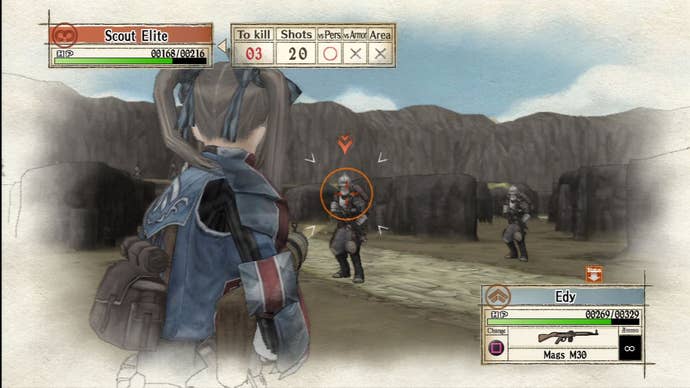
The central idea behind Valkyria Chronicles wasn't really anything new. A fair number of games (e.g. Jagged Alliance) had already explored the concept of combining large-scale tactical warfare with control over the moment-to-moment action of individual units. However, none of them had ever done it with the aplomb of Valkyria Chronicles.
Equal parts strategy game and comic book, Valkyria presented its world with a beautiful cel-shaded visual style that drew on the works of Studio Ghibli with its tough female leads, European aesthetics, and borderline-steampunk technology. By stripping the tech level down to the equivalent of World War I, Valkyria raised the stakes of individual actions and placed heavy emphasis on the placement and protection of the player's precious tank unit.
While many balked at its high difficulty level or dense narrative, players who took Valkyria on its own terms were rewarded with one of the most imaginative and entertaining games of the generation.
Metal Gear Solid 4
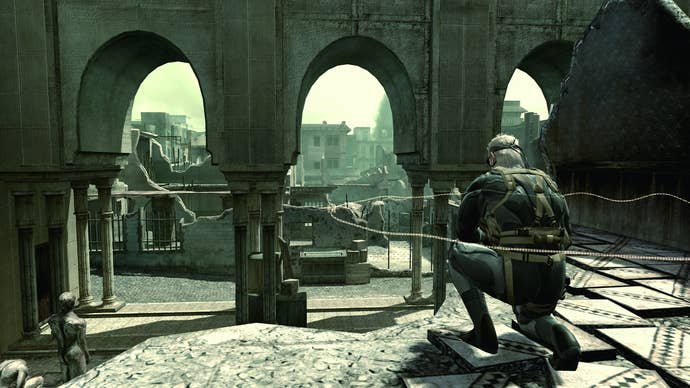
Yeah, look. Metal Gear Solid 4 is a mess of a game. Each of its chapters feels almost completely divorced from the others, with the player's role evolving weirdly over the course of the adventure. One minute you're slipping freely through the jungle, the next you're stalking someone through the streets of Prague, and after that you're playing a shooting gallery. About the midway point of the game, you fall into a rabbit hole of cut scenes and never quite regain control of the action. And in the end, all those theories and guesses about the series' plot line amount to nothing as the whole thing boils down to "nanomachines did it."
Despite its unevenness, MGS4 made a perfect capstone to Solid Snake's 20-year saga. It's equal parts brilliance, self-indulgence, self-reference, and baffling design decisions. MGS4 pushed the game design of the Metal Gear Solid series ahead in important ways, vitally modernizing its action and pulling the entire franchise out of the two-dimensional thinking that had characterized the series' first 3D entries.
And for every groaner of a moment (like Otacon bragging about the wonder of Blu-ray and how it meant no more disc-switching... never mind the 10-minute data installs at the beginning of every chapter), MGS4 offered an equal moment of inspiration (like the battle with Laughing Octopus, a tense fight through a jungle shack against a deranged, invisible foe). Even if it cheated with nanomachines and retcons, it managed to put a bow on the series' storyline and bring everything to a close. Pity about that disaster of a final boss, but even with all its low points MGS4 still managed to rise above much of the competition.
Mike Williams, Staff Writer
Uncharted 2
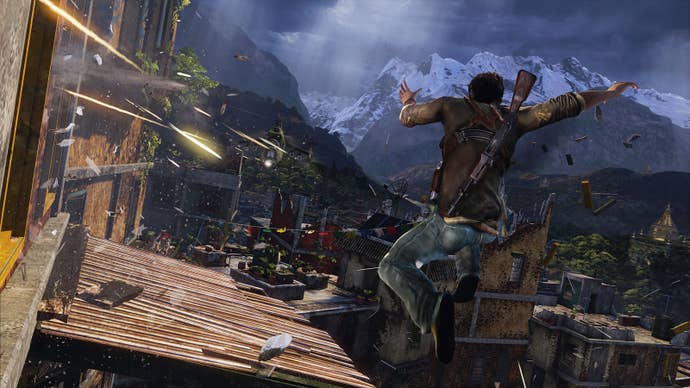
I love the George Lucas of old, and I love Indiana Jones, despite the travesty that was the last film. So when Naughty Dog created its love letter to Indiana Jones, and pulled it off correctly, I was excited. There's nothing better than being able to continue your love, even if it's in a slightly different form (like, say Mighty No. 9). The Uncharted series reached its peak with the second entry, Uncharted 2: Among Thieves. Uncharted 2 really puts Drake through the wringer, taking you to through jungle ruins, snowy mountains, and the city of Nepal. The set pieces are absolutely amazing, from fighting an attack chopper, leaping from train car to train car, and rushing as an ancient stone bridge collapses under you.
Uncharted 2 plays well, but I admit the gameplay isn't necessarily why I continued with the game. The humor and light-hearted fun of Drake's adventure tends to break down if you think about all the people you're killing, but the hero and his supporting cast are so damn charismatic, just like the Indiana Jones we all remember. Drake, Sully, Elena, and Chloe are all characters I loved by the end of the game and I wanted to see their stories continued in the next title. Those characters make Uncharted stand as Naughty Dog's best in my mind, even with the recent release of The Last of Us.
Infamous 2

I found the first Infamous to be good, but not great. Movement was a bit jerky, Cole was a complete sourpuss, and the city didn't have much... life to it. I got a chance to be a superhero from the beginning, but Cole wasn't exactly fun, and the entire game felt to me felt rough around the edges. Infamous 2 started from that foundation and built a much better game.
Despite the crushing failure in the game's opening minutes, Cole feels like a lighter hero throughout Infamous 2. The city of New Marais is based heavily off New Orleans, an area I'm very familiar with as I have family there. It's a great little city, with pockets of deep history, gaudy nightlife, beaten-down homes, and murky swampland. Infamous 2's New Marais captures the feel of New Orleans perfectly, and is a far cry from the boring Empire City.
Cole also moves faster and his moves are more varied. Traversing the city is fun. Once you start unlocking abilities, it becomes much easier to tailor Cole to your very own playstyle, and that's further extended by the addition of Nix and Kuo. Infamous 2 also added my favorite power in the series, Ice Launch (pictured), which shoots Cole high into the air. It was a great addition, allowing you to see the sights of New Marais from the skies; that's the kind of thing that makes you really feel like a superhero. I mean, who doesn't love Ice Launch? (No one is the correct answer) Infamous 2 is the game the first Infamous wanted to be, and I'm looking forward to Infamous: Second Son next year to see what Sucker Punch can do with next-gen power.
Ni no Kuni: Wrath of the White Witch
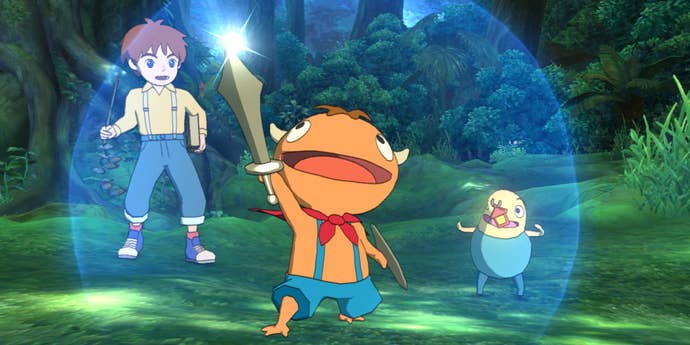
The real magic of Ni no Kuni is how very JRPG it is. It evokes the feel of the '90s JRPGs I was entranced by as a teenager, while pulling in a combat system made famous by the Tales series. When I'm playing it, it feels like returning to a simpler time; it evokes the feelings of nostalgia without actually having a place in my past. Some of that is Level-5's RPG craft and the straightforward plot, but the rest stands on the beautiful art of Studio Ghibli. I still remember the first time I watched Princess Mononoke, which showed me how far anime could really go; up until that point, I'd been watching things like Techni Muyo, Fushigi Yuugi and Dragon Ball Z. Ghibli art still tugs at those emotions whenever I see it.
I also enjoyed the bit of Pokemon action and customization in collecting small familiars to fight for you. These familiars level up, equip weapons, and evolve. Like Pokemon, by the end of the game, I was attached to my crew of Familiars; even better, my team probably won't synch up directly with your crew. Like Pokemon, most of the familiars are super-cute and deserve plush toys of their own (you could get a Drippy plush with the Wizard Edition of the game).
It's hard to find a straight-up JRPG these days, unless you go to mobile platforms. If you can get your hands on a copy of Ni no Kuni and you love JRPGs, it's worth a spin.
Pete Davison, News Editor
Flower

Thatgamecompany's Journey has, I think, received a lot more in the way of critical attention and plaudits from press and public alike, but it's their earlier title Flower that resonated with me far more.
Flower is an utterly beautiful experience. There's no other way to put it. It's a wordless, interactive poem told through sight and sound, and there's still really nothing quite like it out there. It's all the more effective for the fact it doesn't even try to make anything explicit along the way -- it just is, and you can choose to make of it what you will. If you choose to read it as a metaphorical work, you can; if you choose to read it literally, that's fine too. There's no right or wrong answer, but the process of exploring this interactive work of art is rewarding in itself.
For me, Flower was a melancholy experience, even in the moments where the soundtrack became sweeping and triumphant as you rode the wind across the landscape, swooping around obstacles and dancing on the breeze. It was, for me, a game about the passing of a loved one and the fragility of life; I can't explain why or how I felt this way given that there was nothing explicit in it to make me think those things, but from the very moment I heard the opening notes of the game's soundtrack, I experienced a genuinely affecting feeling of sadness. Not sadness in the sense that I didn't want to keep playing; rather, a wistful sense of melancholy for times past, words left unsaid and regrets that can never be unresolved. The beauty of Flower is that I'm not "wrong" to feel that way about the story it was telling, just as the way you feel about a piece of music or a work of art is unique and personal to yourself; similarly, the rather literal interpretation of "flowers hate steel" that I've heard mentioned in the past is just as valid a reading if you choose to look at it from that perspective.
It's difficult to know what else to say about Flower, because it's such an intensely personal experience for everyone who plays it. The personal response you have may range from "this is the most beautiful thing I've ever experienced" to "I don't get this at all" -- but determining how you feel about it is the true end goal of this remarkable game.
Tales of Xillia
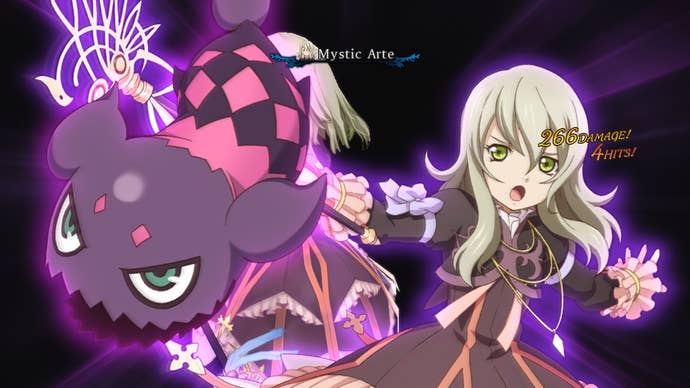
I hadn't played a Tales game prior to starting Xillia for review, but I'm well and truly enraptured.
Tales of Xillia may play things fairly by the book in terms of its overall narrative, but it's stuffed full of interesting characters and brilliantly depicted interactions between them. Protagonist Milla Maxwell is by far the highlight of the game, as she throws off almost every cliché thrown at her to become a memorable character whom it's a pleasure to hang out with -- the fact she's a woman is almost incidental, but in being the way she is, she sets a great example for other developers to follow with female protagonists.
It helps that her game is great, too, of course; Xillia is a sprawling RPG with tons of secrets to find, a brilliant action-based combat system (that can be played in couch co-op if you desire) and a wealth of enjoyable distractions from the main plot along the way. That said, the game remains tightly paced, never getting bogged down in one place for too long, and consequently manages to remain consistently interesting throughout. There's plenty of replay value, too, given that you can explore the plot from the perspective of two different protagonists, and the array of titles to earn via your in-game achievements -- some of which translate to PSN trophies -- provide a ton of incentive to try and explore everything the game has to offer.
It's often said that Japanese role-playing games are a dying or even dead breed, but Tales of Xillia proves the naysayers wrong with aplomb. It's an enjoyable, accessible game that doesn't exclude anyone: those who enjoy a sweeping -- if relatively conventional -- RPG plot have a lengthy tale to explore; those who like a challenge can ratchet up the combat difficulty and have their skills truly tested; those who feel alienated by otaku games can enjoy a title whose diverse cast represents a fun cross-section of society young and old, male and female.
Persona 4 Arena
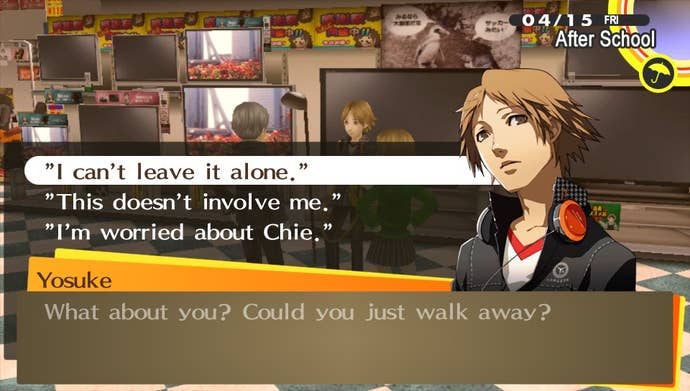
I must confess that I haven't actually played a huge amount of this as yet, which may lead you to wonder why it's here at all.
I include it because I really appreciate all the things it's doing: blending some extremely well-written and thought-provoking visual novel sequences with satisfying (if challenging) fighting game mechanics; providing a follow-up to one of my favorite games of all time; and simply being a highly polished game in every regard.
Persona 3 and 4 remain, for me, some of the most brightly shining examples of how to get characterization right. Each of the characters are interesting in their own right, and each has their own intriguing, complex backstory to delve into. At the same time, they're realistic characters, too -- despite the fact that they're working their way through an obviously fantastical narrative, they remain very human in their motivations, strengths and weaknesses; many of them are flawed in some way, and them coming to terms with their own flaws and true nature is what makes the series so interesting.
One of the reasons I like Persona 4 Arena so much, even with my relatively limited experience of it, is that it continues to explore these characters in great detail. And due to the multi-perspective visual novel nature of the game's story mode -- Persona 3 and 4 unfolded entirely from the perspective of your character, who was mostly mute -- you get a surprisingly deep understanding of how each of these people go through their life: what they think about, their anxieties and insecurities, and how they deal with a crisis such as that depicted in the game's narrative.
I'm typically not a big fan of fighting games, as I feel, for my cack-handedness anyway, they've become overly complicated since the Street Fighter 2 days. With Persona 4 Arena I don't have to feel pressured into being "competitive" in the online arena, because the single player modes are so robust they'll keep me busy for a very long time indeed. I'm excited to see Atlus experimenting with the Persona series and characters, and I hope we see more titles like this in the future.
Of course, if we're wishing, what I really want from Atlus is Persona 5.
Jaz Rignall, Editorial Director
Journey
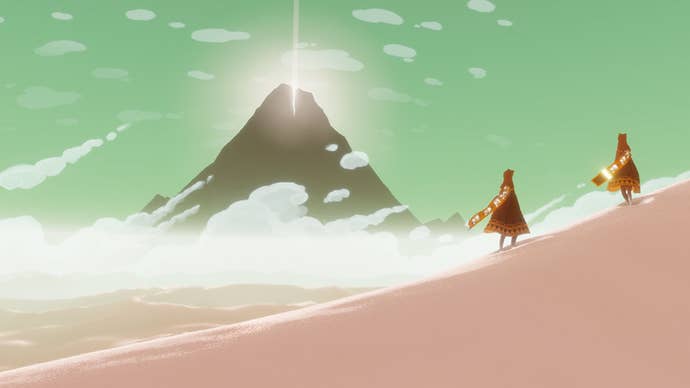
It’s really short. It’s not exactly packed with action and excitement. And it’s got no discernible plot. So why the hell is Journey on my list?
Because it made a deeper impression on me than any other game this generation. Sure, I’ve played plenty of other PlayStation 3 games a lot more, but there’s something really special about Journey.
Its goal is simple – trudge your way to the top of a mountain in the far distance. But while that eponymous journey is fairly short – a few hours at best – it’s a truly memorable experience. The genius of the game is that it’s open to interpretation. There’s little context to what’s going on, nothing is really explained, and it’s up to you to figure out what you actually need to do. As such, it’s a mystery that plays out across a seemingly ancient alien landscape in which you explore, solve simple puzzles, run, jump and float over obstacles, and occasionally accompany other travelers who you never quite know are human or not. There’s little else to it in a practical sense, yet somehow the experience as a whole is far, far greater than the sum of its parts.
Having talked to numerous people who’ve played through Journey, it’s clear that much of what you get out of the game depends on what you put in. Treat it simply as a gaming exercise and leave your imagination in neutral, and you’ll probably wonder what the fuss is all about. But approach it with an open mind and let your imagination run riot, and you’ll quite likely be very surprised at what happens.
Like I said at the start, I’ve put a lot more time into plenty of other PlayStation 3 games – but none of them have stuck in my mind like Journey has. It’s proof positive that gaming isn’t always about quantity – but quality. Journey is a brief, but beautiful experience that sits in my memory as one of gaming’s greats.
Pac-Man Championship Edition DX

I’m so old-school, I remember a brand new Pac-Man coin-op being wheeled into my local arcade and looking at it for the first time, wondering what it was all about. I ended up loving the game, and spent a large amount of my summer memorizing patterns to I could notch up huge scores. Over the years, I grew tired of the Pac-Man formula, but some three decades later, Pac-Man Championship Edition DX came along, and completely rekindled my love affair with gaming’s first mascot .
What I really admire about Pac-Man CE DX is that in many respects, it’s an exercise in restraint. While I’m sure it was very tempting for the developers to add all sorts of new bells and whistles, instead they stayed true to Pac-Man’s original formula, and yet managed to create a whole load of new, fun and highly addictive challenges. It’s clearly the Pac-Man we all know and love, but it’s presented in a way that’s fresh, fun and incredibly addictive.
One of the things I really appreciate about the game is that it offers challenges that are really short and focused, allowing you to play in bursts when you might only have a small amount of time to kill. This also makes it very “one more game”-ish – since you know you’re not going to be playing for more than a few minutes… but yet you end up playing over and over again until you realize those minutes have become hours.
With its comprehensive highscore system, numerous customization features and some really bangin’ music, Pac-Man Championship Edition DX is a masterclass in not only on how to update a classic game, but also in how to make a truly brilliant arcade game in its own right.
Red Dead Redemption
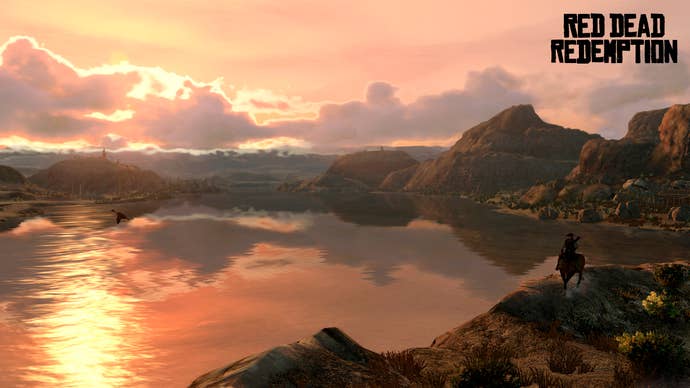
To be honest, it was a tough choice between this, Skyrim and GTA V. I played Skyrim obsessively, and really enjoyed its questlines, terrific set-piece battles, and exploring its extensive, immersive world. GTA V was a blast, packed with detail and brilliant moments. But when I step back and think about the game that is the most memorable, Red Dead Redemption is the one that springs to mind.
I think much of it has got to do with the fact that while Skyrim is fantastic, its fundamental concept of fantasy adventuring is something I’ve also enjoyed in other games – particularly in MMOs. GTA V is similarly brilliant, but again, it represents an evolution of other experiences before it, rather than presenting something different. And while Red Dead Redemption does follow a similar construct to the other two games, it does something that the other two don’t – and that’s give me something I’ve never experienced before.
Riding around this video game Western on my trusty steed is one of the high points of this generation. While the game’s story and mission structures won’t be unfamiliar to anyone who’s played the GTA series, it has a totally completely different feel to its modern-day counterpart. I thought the characterizations were stronger, the setting far more immersive and compelling, and I loved the way the story unfolded. I really cared about what happened – something that never really happened to me in GTA. Add to that some absolutely top-notch audio-visuals, some phenomenal landscaping, and one of the best soundtracks I’ve heard in years, and you’ve got an absolute classic.
I’d love to see a next-gen sequel, but unfortunately – for now at least – it seems that Red Dead Redemption is a one-off. Which is a good excuse to play it one more time.
Little Big Planet 2

This amazing-looking, wonderful-sounding, whimsical (I really, really hate that word, but it is appropriate here in a non-lame way) DIY platformer is a treasure trove of content, rendered in colorful, sumptuous textural graphics. At its heart is a community-driven exploration of level design, animation recordings, and music sequencing. With its content-creation tools, you can build platform, tower defense, competitive sport, RPG, and shooters minigames, and share them with LBP’s community. You can even link your stand-alone levels together. And if you’re not a builder – just enjoy what everyone else is creating.
Its short but engaging platform-puzzler campaign sees you (and pals, preferably) saving Craftworld from an inter-dimensional vacuum cleaner that's sucking up everyone’s friends, occasionally turning them into zombified versions of themselves. As you progress, you can find stickers and collectibles that improve your online ranking, and add to your wardrobe of gear so you can customize the looks of your Sackboy. It's pure fun, and the strange humor that permeates throughout the game makes it a joy to play.
Ultimately, LittleBigPlanet 2 is quite likely the most delightful PS3 game of all. From its phenomenal music to its astonishing looks, this is superb platform game and gaming toybox, packed with character and all sorts of things to help you unleash your creativity.
ICO and Shadow of the Colossus Collection
Both these games might be from the generation prior to PS3, but such is their depth and character that all they need is a bit of a graphical buff to make them classics of this generation too.
Experimenting with what gives games a sense of adventure, accomplishment, and depth, ICO and Shadow of the Colossus are two action adventures that simply must be played – no ifs ands or buts. Both articulate a story with minimal fuss. Both are haunting, atmospheric and melancholy. And both are just phenomenal

ICO is a quiet, slow moving, action-adventure puzzler that begs to be savored. You play a boy with horns cast out by his village and left for dead in a crumbling castle. In your quest to escape, you befriend a glowing female companion named Yorda, who you must lead through a series of well-crafted mazes while protecting her from relentless attacks by shadow creatures who want to pull her into their alternate dimension of darkness. The dialogue is minimal, the music sets a mood of isolation, and you have to work your way up from a stick to a sword.

The spiritual sequel to ICO is Shadow of the Colossus, and this time you're a warrior named Wander riding a horse named Argo. Like ICO, the objective is the rather trite video gaming of saving a (sleeping) girl – but the journey to that end is anything but. Traverse and explore a landscape that’s vast and barren, and destroy larger-than-life Colosi one at a time. Action wise, the boss encounters are a grand contrast to the whispering trails of the over-world, and each battle carries its own set of strategies to exploit.
Both games are masterpieces of minimalist storytelling, and both games deliver a haunting experience that sticks with you. I still think of both these games frequently, even though it’s years since I last played them. Of all the PS3 games out there, I think this pair is would be some of the last I’d ever want to part with.
Dark Souls

More so than any other game on this list, Dark Souls is going to give you grief. Well, unless you're an unparalleled gaming prodigy of monumental and perhaps even precognitive skills. But it's grief in the best sense of the word. It's grief through trial and error, making each step of the journey that much more rewarding.
Dark Souls’ tutorial alone can take more than an hour to get through, and that's if you're paying close attention. With no difficulty level to adjust, this is a hardcore game of constant replays, ad infinitum, until that shining moment of sheer joy when you've finally bested a boss you've been killed by fifty times.
As you dungeon crawl through relentlessly hostile environments, you unlock more and more of Dark Souls’ destitute, open world. Bonfires serve as checkpoints where your health and healing flasks are restored, your game is saved, and your spells are replenished. But all the enemies you've killed respawn too. Because Dark Souls is hardcore.
One of the game's more interesting features, aside from its excruciating difficulty, is an online mode that allows you to jump into another player's game and either fight alongside as comrades, or attack them in a PvP battle. These dynamic interactions require good reflexes and strategic character building, and offer more in-game currency than the campaign.
Ultimately, Dark Souls is a bastard hard game, and stands tall as this generation’s ass kicker. But that’s a fundamental component of its dubious charms, and makes it so, so sweet when you finally reach its conclusion. It’s not for everyone, but if you want to test your gaming mettle, look no further.
